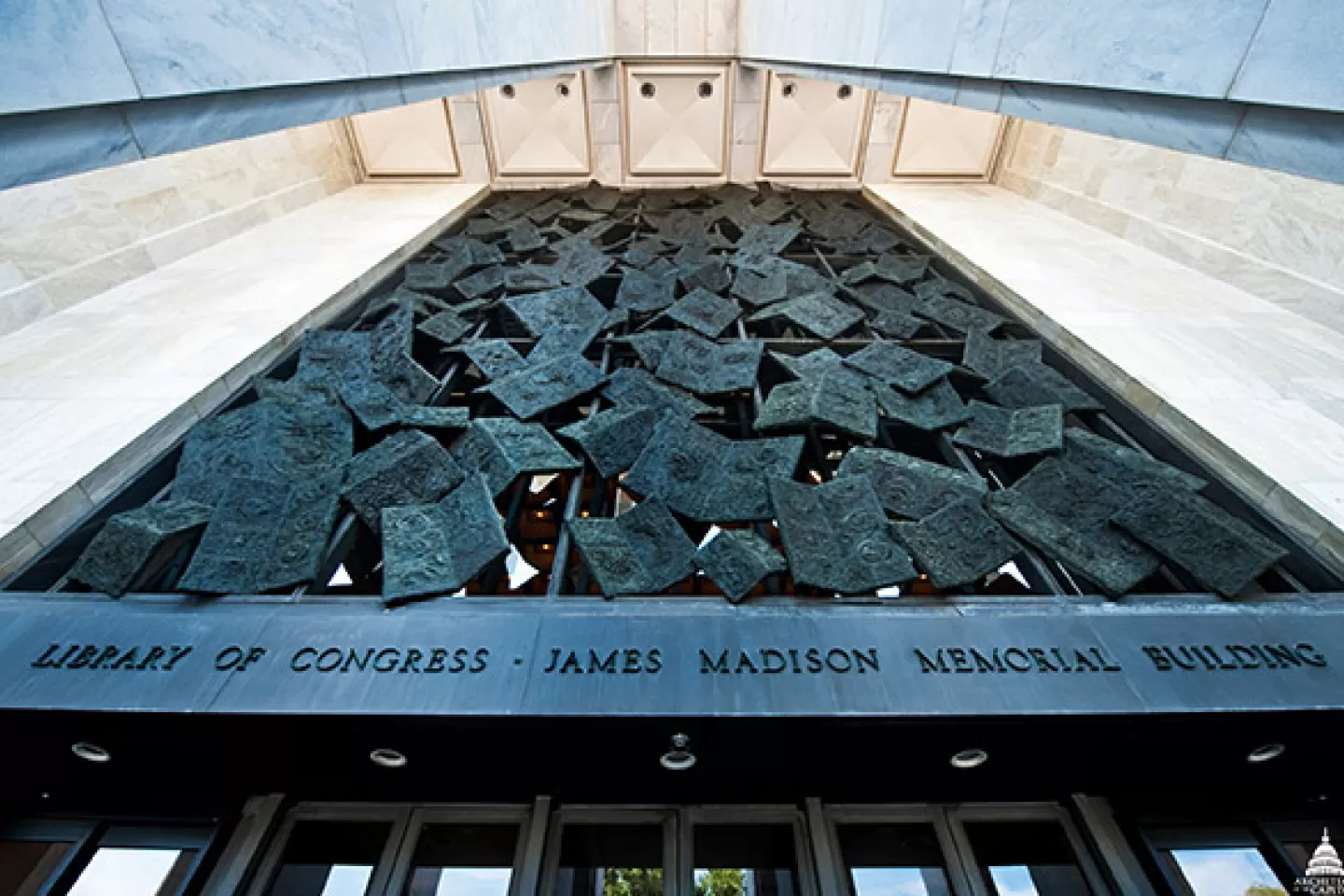Highlights
Measuring approximately 50 feet high by 35 feet wide, it consists of 98 open books, with some as large as five feet wide. The books were cast using the lost wax process; the total weight of the installation is 27 tons. Eliscu conceived the symbolic sculpture to mark the library's entrance, and the individual books bear no identifiable text; rather they are roughly textured and inscribed with starburst patterns and cosmic swirls, suggesting the universal importance of knowledge.
Eliscu explains, "All that is man, his hopes, his dreams, his aspirations, would never be known if not for the gift of books. Books are a force the power of which has kept cultures alive and purposeful. They are our heritage. In designing this bronze entrance for the hallowed halls of the Library of Congress, I wanted to create a work quietly evocative of the building's purpose, yet powerful enough so that it would not be just a decoration that the eye of the beholder would pass over without a second glance. The sculptural problem was, for me, to create a work that while recognizable as books, would by use of strong negative space and bold textures create a feeling of movement. The result is a cascade of books, our sublime heritage, falling from the heavens to be captured in the eager minds of man."
Welded in clusters at various angles with many irregular openings, the sculpture's individual elements and overall configuration are intended to convey falling motion. Enhanced by lively surfaces modeled to capture and reflect light, the sculpture’s dark bronze forms contrast with the static geometry of the streamlined, white marble entryway.
The Coordinating Committee for the design and construction of the building, consisting of the chairmen of the Joint Committee on the Library, the Senate Office Building Commission, and the House Office Building Commission, approved the architect's recommendation to include art in the James Madison Memorial Building.
In 1967 the building designers, Associate Architects Dewitt, Poor & Shelton Architects, recommended Eliscu for the bronze scree for the entrance and identified several locations for artworks. Eliscu received the commission for the screen project in 1972. Modern Art Foundry, located in Long Island City, New York, cast the bronze components, which Eliscu assembled for welding onto the 20 individual frame sections. Handcraft Metals Corporation installed A Cascade of Books in 1983, three years after the library opened.
Artist
Frank Eliscu (1912–1996) is best known as the designer of the Heisman Memorial Trophy, or All-American Football Trophy, which he completed as an emerging artist in 1935. He was born in Brooklyn, New York, where he attended Pratt Institute. For a time he apprenticed under Rudulph Evans, who sculpted Nebraska's Julius Sterling Morton for the National Statuary Hall Collection; he worked with Evans on the statue of Thomas Jefferson for the Jefferson Memorial. For twenty years he taught sculpture at the High School of Industrial Art, later the High School of Art and Design, and he authored three books on sculpture techniques.
During the 1960s and 70s, Eliscu executed many architectural pieces and created designs for Steuben Glass, commissions for Brookgreen Gardens, and two eight foot figures for the Empire Trust Bank in New York City. His other federal commissions included the plaque of Representative Joseph Cannon for the Cannon House Office Building, placed in 1969, and the 1974 Inaugural medals for President Gerald R. Ford and Vice President Nelson A. Rockefeller.
His eagle on President Ford's inaugural medal served as the model for the enlarged version that President Ford later presented to Leonid I. Brezhnev, then the Soviet leader. In 1967 Eliscu became a member of the National Academy of Design, and from 1967 to 1972 he served as president of the National Sculpture Society. He died at the age of 83 in Sarasota, Florida.
